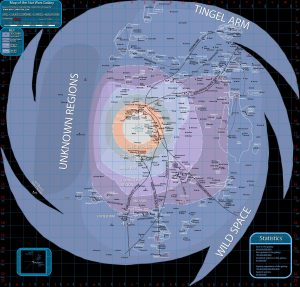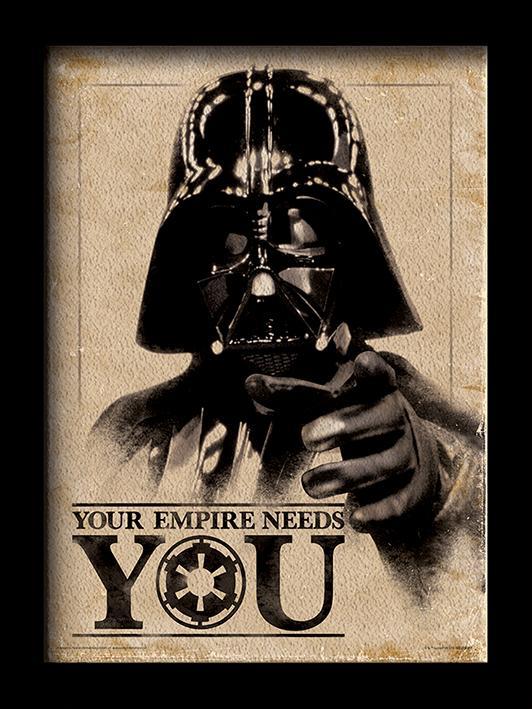 For a student of historical empires, it is always fascinating to see how the word ’empire’ is used in less academic circles, particularly the nebulous realm that is popular culture. So often in fantasy and science-fiction media, polities and leaders are given titles meant more to convey a sense of majesty or malevolence than to reflect any accurate picture of the structure of the state in question. This does ironically have some historical precedent, as claims to the prestige of empires and emperors have regularly been used with little basis for the claim (looking at you, Holy Roman Empire). While noted imperial historian John Darwin has observed that imperialism is the default mode of human state-building, not every state practices it successfully and in so doing becomes an empire. Some scholars prefer a weighty list of qualifying factors for an empire, but the most historically useful definition is the simplest: an empire is a geo-political entity that rules over subject peoples using either direct or indirect power. Such a relationship most often takes the form of what is known as the core-periphery model. This loosely visualizes an empire’s control as a series of concentric circles, in which the ruling state is the innermost core that stretches its power out over ever more distant peripheries, extracting resources and redirecting them to the benefit of the core. The farther one gets from the core, the more power is required to control a region while simultaneously enabling decreased consideration for the autonomy or rights of the subject people.
For a student of historical empires, it is always fascinating to see how the word ’empire’ is used in less academic circles, particularly the nebulous realm that is popular culture. So often in fantasy and science-fiction media, polities and leaders are given titles meant more to convey a sense of majesty or malevolence than to reflect any accurate picture of the structure of the state in question. This does ironically have some historical precedent, as claims to the prestige of empires and emperors have regularly been used with little basis for the claim (looking at you, Holy Roman Empire). While noted imperial historian John Darwin has observed that imperialism is the default mode of human state-building, not every state practices it successfully and in so doing becomes an empire. Some scholars prefer a weighty list of qualifying factors for an empire, but the most historically useful definition is the simplest: an empire is a geo-political entity that rules over subject peoples using either direct or indirect power. Such a relationship most often takes the form of what is known as the core-periphery model. This loosely visualizes an empire’s control as a series of concentric circles, in which the ruling state is the innermost core that stretches its power out over ever more distant peripheries, extracting resources and redirecting them to the benefit of the core. The farther one gets from the core, the more power is required to control a region while simultaneously enabling decreased consideration for the autonomy or rights of the subject people.
Perhaps the most famous example of this fictional charade had once existed in the greatest sci-fi franchise of all time: the Galactic Empire of Star Wars. Yet with new moves in Star Wars storytelling has come the unique phenomenon of historical theory informing fantasy. Brace yourselves; this post is about to get extremely nerdy.
In the universe of Star Wars storytelling that I and so many others grew up with, the Galactic Empire was simply the name of the villainous regime that had purged the galaxy of Jedi and was finally toppled by the efforts of the heroes in the (chronologically) sixth film in the franchise. As the three prequel films had shown, the Empire had once been the Galactic Republic but had been corrupted by the machinations of an evil senator. The impression was that the Republic spanned all or most of the inhabited planets in the galaxy, with criminal cartels exerting authority where Republic law waned. As democracy fell to fascism, control simply held a new face and was exerted all the harsher.

All of that changed with Disney’s acquisition of Lucasfilm in the fall of 2012. Soon afterwards, the decision was made to excise all previous print material from the official canon, starting over with one cohesive universe of story launching from the starting point of the six established movies and one television show. As the books and comics of this new canon slowly emerged, the majority of storytelling focused on fleshing out familiar characters and periods in Star Wars lore. Out of this movement, a new Empire was born. The Republic was no longer in control of most or all of the galaxy, leaving room for imperialistic expansion. Furthermore, the Republic’s opponents in the civil war immediately preceding and then catalyzing the birth of the Empire were primarily banking, mining, and commercial super-conglomerates in possession of a legion of sparsely populated planets rich in resources. These two factors allowed the new canon to establish the Empire as a polity worthy of the name, ruthlessly expanding and exploiting peoples, planets, and entire star systems for their material wealth. As new books spelled out intergalactic imperialism, the astro-geography of Star Wars illustrated it. The capital of the Republic-turned-Empire was the planet Coruscant, located near the center of the galaxy, with its major member worlds and power base (relatively) nearby. The exploited worlds, on the other hand, were on the fringes of the galaxy, late to be settled and far from the prying eyes and concerns of civilization proper. These two galactic regions are known respectively as the Core Worlds and the Outer Rim, and so under the Empire the Star Wars galaxy has become a literal representation of imperial theory on the core-periphery model. It’s hard to tell whether this more historically grounded pattern of imperial behavior was intentional, subconscious, or just a happy accident, but it has certainly made Star Wars just a bit more tangible for an historian that already had his heart in a galaxy far, far away.

One reply on “Theory made Literal: Star Wars and Concepts of Empire”
Hey, something good did come out of scrapping the old EU.